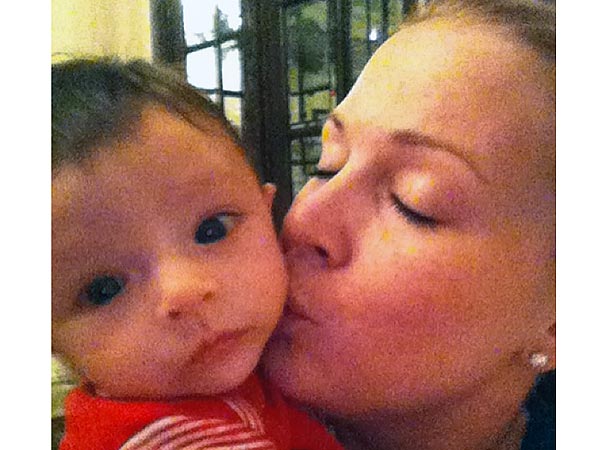TV Watch
TV News
Dame Maggie Smith and Shirley Maclaine on the set of Downton Abbey
Nick Briggs
Sunday's two-hour premiere was full of developments – upstairs, downstairs and outside of the Crawleys' sprawling country home. As Mary and her fiancé Matthew prepare for their wedding, Lord Crawley gets word that his wife Cora's fortune has disappeared thanks to a bad investment in a Canadian railroad company. At the same time, Matthew has learned that he may become the heir to his late fiancée's father's inheritance. And so just when the problem of finding a practical heir to Downton is resolved, the future of the estate is once again in question. Anna is as loyal a wife as ever, working to free Bates from spending life in prison; Lady Edith continues to pursue the much older Lord Anthony; and housekeeper Mrs. Hughes may have cancer!
But that's just the tip of the iceberg that sank the Titanic. Here are the best moments from the season 3 premiere:
1. You May Kiss the Bride: After Matthew tells Mary he could never in good conscience keep Lavinia's father's fortune, she reveals her own father's financial troubles, hoping that he'll change his mind to save Downton. But he does not back down, and, after accusing him of not caring, she runs away in tears – the night before their wedding. Later, Matthew goes to her bedroom to smooth things over. Because it's bad luck to see the bride before the wedding, they talk with a door between them and then share a kiss with their eyes closed. But Mary peeks – will it bring bad luck? Well, her horse-drawn carriage did make it to the chapel and the pair returned safely from their honeymoon in the south of France.
2. Branson, You're Welcome: An expectant Lady Sybil returns from Dublin with her husband Thomas Branson, Lord Crawley's former chauffeur. And he doesn't receive a warm welcome. That he doesn't have proper dinner attire and speaks his mind about Irish politics at the meal table does not help his cause. But when uppity guest Larry Grey (a former suitor of Sybil's) drugs Branson's drink, making him appear drunk at dinner, two men come to his rescue: Lord Anthony accuses Grey, and Matthew – very democratically – declares he wants Branson to be his best man at the wedding.
3. Dowager's Secret: Though she says of her unsavory son-in-law, "I shall make sure he behaves normally because I shall hold his hand on the radiator until he does," the Dowager Countess reveals at dinner that she was the one who paid for Branson's passage from Dublin to Downton because she wanted Sybil and her husband to be present for the wedding. It's a sign that Downton's most traditional resident is coming around to the idea that her granddaughter has found love with a former servant.
4. Martha Saves the Day: The much-anticipated arrival of Lady Mary's mother, Martha Levinson, from New York was all Downton Abbey fans could have hoped for. Whether spewing progressive American superiority or going head-to-head with Lady Violet, Martha ignited Downton. But it was her quick thinking when the stove went out before a dinner party that was her best moment. Instead of sending Downton Village's most distinguished guests home without dinner, she suggested an indoor picnic, inviting everyone to eat what they want, where they want. Then she sang a tune! Her song: "Let Me Call You Sweetheart."
5. Thomas vs. O'Brien: They shared cigarettes and schemed together to bring down Bates in the past, but in season 3 Downton's most mischievous couple, valet Thomas Barrow and lady's maid Sarah O'Brien, are at odds since the arrival of a new footman, O'Brien's nephew Alfred. After Thomas embarrassed Alfred by wrongly advising him on how to clean Matthew's dinner jacket, and thereby burning it, O'Brien returned the favor by hiding Lord Crawley's shirts, forcing the most distinguished man in the county to dress in black tie rather than white, which according to Martha, made him suitable for a nothing more than a barbecue.










